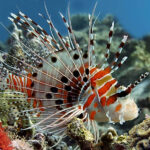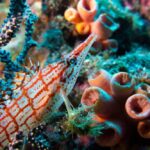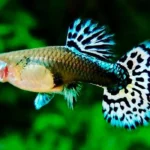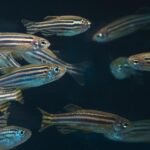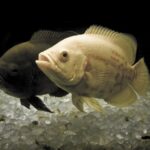Beneath the Waves Lies a Colorful Secret
Coral Reef Fish Beneath the blue surface of the oceans in the tropics, a daily drama unfolds in color. It’s a color, action, and survival ballet danced by some of nature’s most interesting performers—coral reef fish.
These marvelous creatures are not simply decorations in an underwater Eden. They are the colorful center of coral reef communities, playing vital functions that make ocean environments two of the most diverse and productive in the world. But reef fish are in danger.
From the aggressive clownfish to the nervous grouper, every one has its role, and all their actions taken as a whole produce a delicate balance honed over millions of years. In this complete guide, we’ll delve into the species of coral reef fish, their role in the ecosystem, symbiotic relationships, and how they contribute to the ocean’s healthiness—and in turn, our planet. You’ll also learn what’s threatening them and what is being done to conserve them.
You’ll learn too about the dangers threatening these fish and the measures being taken to save them. Whether a marine biology buff or an inquisitive mind attracted to the ocean’s secrets, this is your plunge into the fascinating world of coral reef fish.
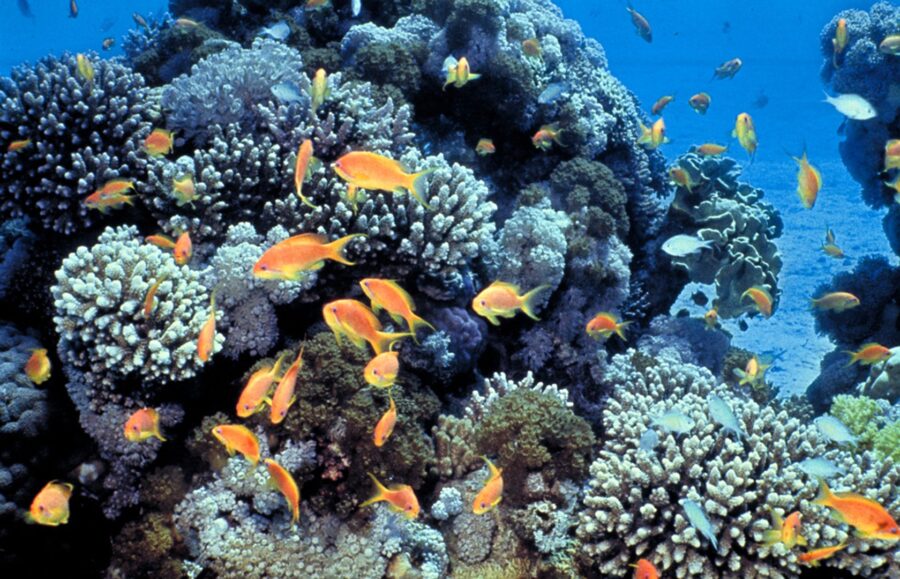
What Are Coral Reefs and Why Do They Matter?
Coral reefs are also called the “rainforests of the sea”,—and they aren’t joking. They cover less than 1% of the ocean floor but support about 25% of all species in the ocean.
That’s millions of various types of life, all living in an intricate, linked web.
A Brief Overview of Coral Reefs
It’s actually a small animal known as a polyp that has created calcium carbonate frameworks for thousands of years to develop the enormous reef complexes of today. Those frameworks offer shelter, food, and breeding room for an awe-inspiring diversity of marine animals.
The Value of Coral Reefs
Biodiversity Hotspots: Reefs support over 4,000 species of fish and countless invertebrates, algae, and microorganisms.
Coastal Protection: They act as natural barriers, shielding coastlines from storm surges and erosion.
Food Security: Coral reef fish are a vital source of protein for millions of people globally.
Economic Importance: Coral reef tourism generates billions in revenue each year.
Medical Discoveries: Reef organisms have been used to develop treatments for diseases including cancer, arthritis, and bacterial infections.
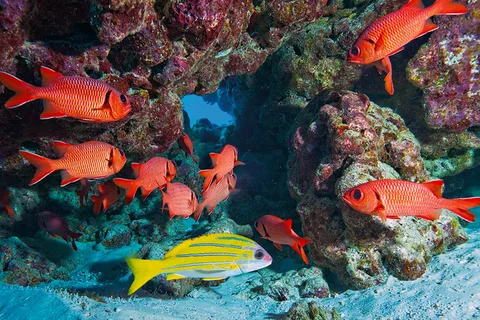
The Diversity of Coral Reef Fish
The variation in coral reef fish is incredible. There are all shapes, sizes, and hues, each specially designed to occupy some niche on the reef.
Major Families of Reef Fish
Damselfish: Small but aggressive, damselfish are known for their territorial nature.
Clownfish: Famously symbiotic with sea anemones, they’re one of the few fish immune to anemone stings.
Wrasses: These fish often serve as “cleaners,” picking parasites off larger species.
Parrotfish: Equipped with beak-like teeth, they feed on algae and dead coral, contributing to reef regeneration.
Groupers: Apex predators that help control populations of smaller fish.
Butterflyfish and Angelfish: Known for their brilliant colors, they’re often indicators of reef health.
Surgeonfish: Including the popular blue tang, these herbivores graze on algae, preventing overgrowth.
Roles by Feeding Type
Herbivores: Control algae that could otherwise smother corals.
Carnivores: Maintain species balance by preying on smaller organisms.
Omnivores: Offer flexible diets that stabilize food webs.
Detritivores: Recycle organic matter, keeping the reef clean.

Ecosystem Engineers—The Role of Reef Fish
They are not mere residents; they actively shape their environment. Here is how they contribute to the ecosystem:
Predator-Prey Balance
Snappers and groupers, among the predatory fish keep the numbers of small fish and invertebrates under control so that no species overpowers the other, which would otherwise distort the balance of the ecosystem.
Cleaning Stations
Certain gobies and wrasses are “cleaners,” establishing stations where client fish visit to have dead skin and parasites scraped away. Such mutualistic activity not only aids the client fish but also maintains the health of the reef community.
Habitat Modification
Some fish, like damselfish, actually cultivate algae gardens and even “weed out” pests. This is just one example of how they modify their microhabitat in ways that can attract or repel other species. These unseen roles are vital to the survival and durability of the reef.
Symbiosis—Nature’s Teamwork
Coral reef communities are replete with interesting alliances. Listed below are a few that include reef fish:
Cleaner Fish and Clients
Cleaner wrasses establish stations where bigger fish patiently wait to be cleaned. They are founded on trust and cooperation, and the ecosystem prospers as a result of them.
Gobies and Shrimp
Other gobies coexist with shrimp in burrows. The shrimp digs and maintains the shelter while the goby acts as a sentry against predators. When danger is near, both scurry inside.
Such associations are excellent examples of co-evolution and show the intimate interdependence characteristic of reef ecosystems.

Conclusion
In the sweeping drama of life under the sea, coral reef fish are not supporting actors but the lifeblood of the reef. From ecological balance to the moulding of physical environments, from complex symbiotic relationships to nutrient recycling, these fish are the epitome of the complex beauty and cunning of nature. Their duties can be varied and subtle, but collectively they spin the web of life that supports coral reef ecosystems and, by extension, the millions of people who rely on them.
But that web is unraveling. Researchers are also racing to study the survival capability of some reef fish and corals, hoping to guide next-generation conservation strategies.
These are not local problems impacting divers or island cultures; they are global warning signs resonating beneath the waves. There is hope, however.
Marine reserves, sustainable fishing practices, reef restoration, and community-based conservation are paying off
Finally, the destiny of fish that call coral reefs home is not only an ecological one—it’s a human one. The health of the ocean is our health.
FAQs
What are coral reef fish?
Coral reef fish are organisms that inhabit coral reef environments. They consist of a diverse range of types of fish, like clownfish, parrotfish, wrasses, groupers, and angelfish, each with their specific role in sustaining the wellness and stability of the environment of the reefs.
How do coral reef fish help control algae?
Herbivorous fish such as parrotfish and surgeonfish graze on algae that form on the surfaces of corals. Without these herbivores, algae would overgrow and kill off the coral by shading it and inhibiting the coral’s ability to photosynthesize and grow.
What are the biggest threats to coral reef fish?
Climate change and coral bleaching
Overfishing and destructive fishing practices
Pollution (plastic waste, chemicals, runoff)
Habitat destruction from coastal development
Ocean acidification
Can coral reef fish recover if the reefs are damaged?
Mostly, yes—but only if the destruction isn’t extreme and the reef has a chance to recover with some protection. Fish populations tend to recover in Marine Protected Areas (MPAs), where fishing and human use are restricted. But if coral structure is irreparably lost, numerous fish have no place to go.
How can I help protect coral reef fish?
Avoid buying products made from coral or unsustainably sourced seafood.
Reduce your carbon footprint to fight climate change.
Support reef-safe tourism by choosing ethical snorkelling and diving tours.
Use reef-safe sunscreen to prevent harmful chemicals from washing off into the water.
Donate to or volunteer with ocean conservation organisations.
How do coral reef fish contribute to human life?
Food security, especially for coastal communities.
Economies, through fishing and ecotourism.
Medicine, as many reef organisms are being studied for pharmaceutical use.
Coastal protection, by supporting reefs that buffer wave energy.

